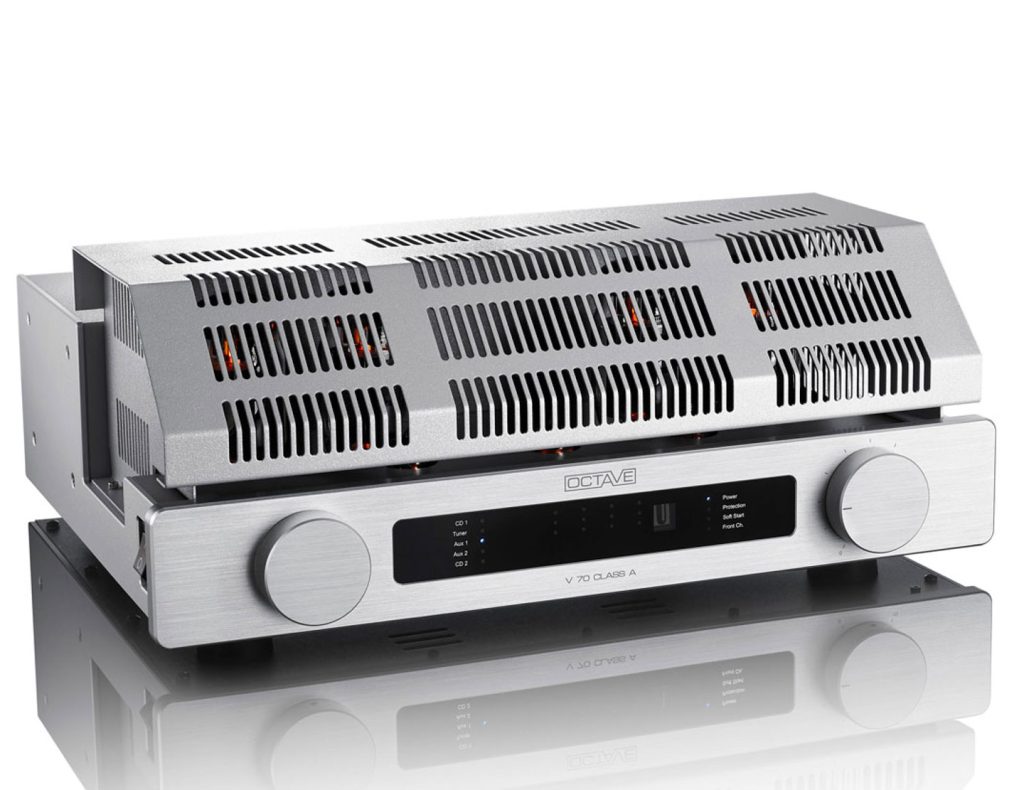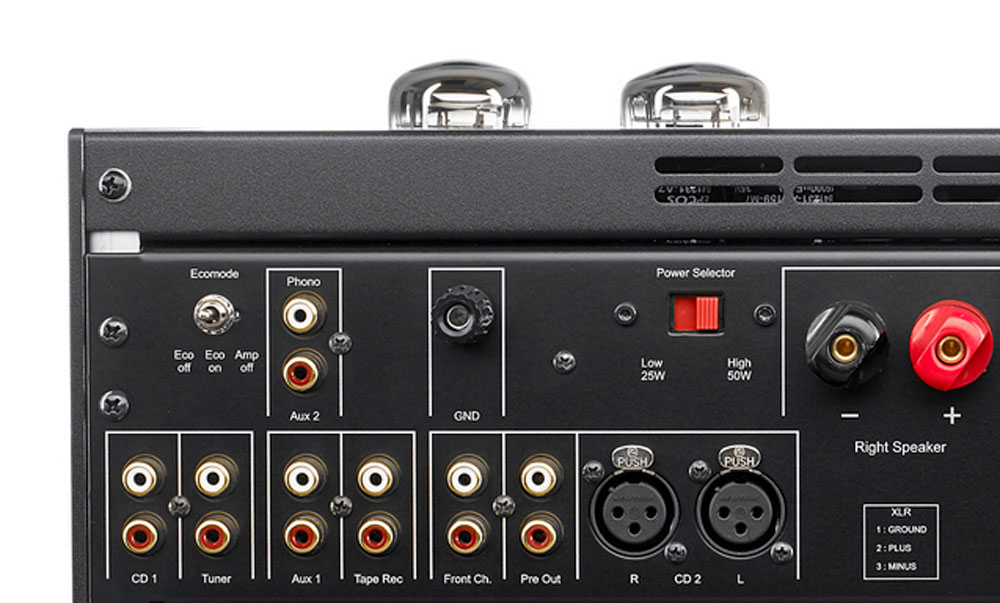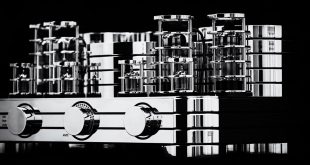The Octave V70 Class A attempts a special balancing act: it wants to be an integrated amplifier that combines the precision of the transistor with the tonal beauty of the tube and the Class A circuit. It has succeeded quite well… The tube specialist Octave has created its own league in the world of hi-fi: Tube amplifiers that don’t just sound “beautiful”, but rather particularly authentic. This has always been the approach of Octave boss Andreas Hofmann, who can lament for a long time about today’s sound zeitgeist. Hofmann: “Today, a lot of things just have to sound nice. That’s not my way. For me, it has to sound right. Because nice-sounding tube amplifiers are usually far too dependent on the connected speakers. Octave integrated amplifiers have to sound good with all good loudspeakers.”

Hofmann has proven this universality many times over; his V80 SE was the reference amplifier at LowBeats for a long time. And although (or perhaps because) he is an absolute tube specialist and can call a winding plant for transformers his own, Hofmann does not rely exclusively on glass bulbs. Semiconductors are also used where it makes sense – simply because they sometimes provide much better long-term stable working conditions. And that’s exactly what makes an Octave: You always know that you’re getting a friend for life with him. I myself have had two Octave components over the past decades: the HP 200 preamplifier and the V40 integrated amplifier. There was never anything wrong with them…

For this longevity, the Octave V70 Class A presented here has a few special features that also characterize its brothers. For example, there is electronically monitored overload protection, the controlled ramp-up of all heating and anode voltages and, last but not least, the so-called ECO mode, which switches off after a few minutes without a signal, only to ramp up again gently with a signal. This is familiar from modern subwoofers. But such a life-extending mode is particularly useful for tubes.
The special features of the Octave V70 Class A
The V70 SE is a long-standing member of the Octave family. The biggest difference to the newer Class A version is already in the name of the amplifier and makes high-end users sit up and take notice: Class-A.
In principle, Class A has disadvantages with tube circuits – namely more components in the signal path. Accordingly, the concept with the higher quiescent current also sounds different, often even somewhat less dynamic than a classic push/pull setup – also because it inevitably has less power. But most music lovers find the Class A sound more pleasant, rounder and finer. Hofmann: “Technically it’s actually a step backwards, but sonically it’s a step forward…”
That’s why he is happy to take this step, but adds a few refinements to his Class A circuit. This is how Hofmann developed the “Dynamic Working Point Adjustment” (DBC). Behind this is a self-regulating Class A amplifier which, if the worst comes to the worst, leaves its Class A range and then continues to operate in the Class B range with a significantly lower quiescent current.
Is this cheating? “A little bit,” replies Hofmann with a grin. “But it’s better if the V70 Class A doesn’t have to round off the upper dynamic peaks, isn’t it…? He’s right, especially since the crossover distortion of classic A/B circuits isn’t as big an issue with tubes as it is with transistor amps, where this crossover distortion from half-wave to half-wave sounds unpleasant. In any case, the DBC concept has proved so successful that Hofmann intends to pursue this line very soon.

Practice
The mere fact that I am adding a section on the practicality of a (actually simply equipped) tube amplifier shows the exceptional position of the V70 Class A. For example, there is the auto-bias circuit: a controller in the amplifier can independently adjust itself to the four power tubes used. That is commendable. For those familiar with Octave devices: The long-established BIAS measurement, which indicated the status with the colored LED traffic light and was set using a screwdriver, is still available, but only for functional testing.

The functions of the V70 Class A are comparatively diverse. It offers 6 x high-level inputs, a regulated preamp output and the option of integrating the amplifier into a home theater system. The settings for ECO mode and the power range (low/high) can also be found on the back.
And that brings us to another special feature of the Octave. The V70 Class-A can be operated in two optimized power states: in “Power High” or “Power Low” mode. As this is a class A amp, the power output is naturally lower than with conventional push-pull circuits. Our test model was equipped with the powerful KT 120; with this (or a KT 150) the maximum output (around 50 watts per channel) can be achieved. If less power is required (i.e. around 20 watts per channel), the red switch on the rear of the amplifier is set to “Low”, which means that a weaker tube such as the 6550 is also driven optimally. Hofmann: “The 6550s from JJ in particular are comparatively inexpensive and sound really good.”
I tried it out, of course, and luckily found a pair of 6550s from JJ in my tube store. Result: Hofmann is right. The V70 Class-A sounds even finer with the 6550 in low mode. The KT 120 is an excellent tube, but there are other tubes with a more powerful sound. And if 20 or 25 watts are enough…
And then there is the expansion option via the so-called black boxes. Hofmann sent me the large Super Black Box (price 2,790 euros) to try it out. With a battery of twelve high-performance capacitors, it quadruples the screen capacity of the V70 Class A. This expansion of the power supply not only increases the impulse power, but also the ability to drive electrically difficult loudspeakers much better.
During the listening tests, we mainly listened with our two speaker references, the FinkTeam Borg and the AudiaZ Opera. The V70 Class A drove both of them confidently up to the expected level limits. However, its performance with the Super Black Box connected was noticeably better in both speaker cases. It’s not just about better bass control – that’s an added bonus too, of course. No: in fact, the space opens up further and the overall sound seems to emerge a little more effortlessly. Knowing full well that this will make the V70 Class A a good 25% more expensive, my urgent recommendation is: “with” please! The listening tests were then carried out almost exclusively with the Super Black Box connected and with the more powerful KT 120 tubes. And in this constellation, the V70 Class A sounded pretty much as I had expected. Despite tubes (which generally have somewhat less bass control than transistor amps due to their high impedance) and despite the even more “beautiful” and warmer sounding Class A circuit, the Octave offered a downright refreshing bass performance. During the electro-pop classic “Oh Yeah” by Yello, it pushed the sub-bass into the listening room via Audiaz Opera with such force that we initially looked at each other in disbelief: Can a tube like this play with just 50 watts? Not normally. Especially since it’s not just about the bass: the Octave celebrated a wonderfully finely chiseled, very open sound image, in which all details are fanned out precisely, but not superficially. I am a great friend of Andrea Kleinmann’s “Saitenwind”, a solo harp recording in the monastery church in Lorch with a wonderful sound. The recording from the summer of 2023 was made by LowBeats colleague Jürgen Schröder. That’s why I was relatively close and know what it sounded like there. And I can only say that the recording with the combination of V70 Class A and AudiaZ Opera came pretty damn close to the recording moment. The strings resonated so naturally, so finely, so effortlessly and at the same time so physically; the whole instrument could be felt in the room. I can’t remember ever having heard the work so authentically before. I was so enthusiastic that I listened to the harpist’s entire CD all the way through – although the CD does have some small lengths. To ground myself a little, I took our McIntosh classic off the shelf. The MA 7900 is no longer the very latest and has not been in the American range for a long time. And yet it represents that special American way of sound that is still very impressive: always warm and cozy from the bottom, but always powerful when you press the gas pedal. But although the Mac has at least four times the power of the Octave, this was only noticeable at very high volumes. At normal to higher levels, the tube amp often seemed a little faster and more powerful. And it always sounded a lot more open and refined in the mid-range: voices had a very special (shall I say “beautiful”?) flair with the Octave. Everything had such a pleasant clarity and velvety quality. That is extraordinary. Of course, we also listened to the V70 Class A against our current amplifier reference, the Westend Audio Monaco. With its 2 x 100 watts, it is actually a little more agile and makes the bass drums pop even harder. It also conveyed an even more stable spatial impression. The Octave doesn’t sound quite as grippy, but in many places it provides the somewhat more cultivated subtlety – for example, when it draws the harp strings a little more delicately. Either way, we are operating at a very high level here. Class A: Hi-fi connoisseurs know about the advantages of this circuit concept, which generally sounds finer and purer due to the lack of crossover distortion. However, Class A also stands for high power consumption and low power, and so Octave boss Andreas Hofmann has devised his own kind of Class A, which, in case of doubt, can be left to its own devices and opens up a wider power range. Another example of the “German” approach to tube amplifiers can be seen in the diverse and clever features and the fact that this amplifier is likely to have a long life thanks to its flawless workmanship and tried and tested “gentle” circuitry Ultimately and above all, however, the Octave V70 Class A is an outstandingly natural-sounding integrated tube amplifier, which unquestionably occupies a special position in its class and also keeps the audiophile play instinct alive with a wide range of options for experimentation and sound tuning… Summary Distribution: Price (manufacturer’s recommendation): Test McIntosh MA 7900 AC – Power & Passion
Hearing test


Conclusion Octave V70 Class A
Rating
Sound Quality
Usability
Build Quality
The rating always refers to the respective price category. Enormously fine, musically natural tuning Excellent workmanship Automatic calibration, ECO mode Tuning with black box and low-level tubes possible
Ocatve Audio
Reutaeckerstr. 5
76307 Karlsbad
www.octave.de
Octave V70 Class A: 10,000 euros
Octave Super Black Box: 2,790 eurosTechnical data
Octave V70 Class-A Concept: Push-pull integrated tube amplifier with Class A Power (High/Low): 2 x 50 watts / 2 x 25 watts Tube assembly: 4 x KT 88-S4A-Carbon Inputs: 5 x line level RCA (one of which is a home theater bypass input), 1 x XLR Outputs: 1 x Pre-Out regulated / 1 x Record output Cinch Special features: Bias control, eco mode, home theater bypass function, soft start Possible extensions:
Black box for higher capacity, phono card Dimensions (W x H x D): 45.1 x 15.0 x 41.5 cm Weight: All technical data Teammates and opponents:
Test integrated tube amplifier Westend Audio Monaco
Test FinkTeam Audio Borg: the new LowBeats reference
Test AudiaZ Opera floorstanding speaker: the beauty of maximum transparencyMore from Octave:








